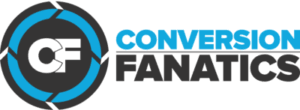Anastasia Leng
CreativeX
"Anastasia Leng is the founder & CEO of CreativeX, an automated creative excellence platform that aims to advance creative expression through the clarity of data. CreativeX technology is used globally by Fortune 500 brands like Unilever, Nestle, Heineken, and even Facebook to measure creative efficiency, consistency, and impact across all their image and video content worldwide. Prior to CreativeX, Anastasia co-founded Hatch, one of Time Magazine’s Top 10 Startups to Watch in New York and one of four most innovative retail companies. Prior to Hatch, she spent 5+ years at Google, where she worked on every ad tech and analytics product, led entrepreneurship efforts in EMEA and was responsible for early-stage partnerships for Google Voice, Chrome, and Wallet. Anastasia graduated from the University of Pennsylvania with a triple major in Psychology, Sociology, and French. She’s been a nomad all her life and has lived in Bahrain, Vietnam, Hungary, Russia, France, England, and the US. She remains a mediocre tennis player, friend of donkeys everywhere, lover of carrot cake and an aspiring writer.
- Part 1Data-backed creative content — Anastasia Leng // CreativeX
- Part 2 Measuring brand efficiency in real time — Anastasia Leng // CreativeX
Show Notes
-
·01:36 : How to think about your brand as youre marketing ·Ben gives a brief recap of yesterdays conversation about ranking factors and getting creative content to convert. As Googles priority for ranking evolves, SEO slowly gets intertwined with branding. Anastasia talks about figuring out what is unique to your brand and how each element and branding principle affect your brand identity when you analyze your data. Consistency is key when thinking about branding and meeting your marketing KPIs. ·04:27 : Is a consistent brand always a good brand? ·Ben talks how being consistent can translate to developing a good brand or not. Does consistency always translate to success? Anastasia explains how consistency generally drives efficiency for a brand. While off colors and questionable copies can be seen as negative, Anastasia talks about how these subjective elements can be used intentionally to drive a brand. Creativity is not just limited to what is currently on trend. ·08:15 : Cultivating and measuring your brand from an SEO perspective ·For this, you need to be thinking about what is the main goal that you are trying to achieve with your copy. Anastasia compares SEO strategies with CreativeXs process of maintaining consistency by monitoring metrics for their clients. Copy is subjective, so having a checklist of important principles can help you keep on track. ·09:47 : Brand impression vs Direct Response: How do SEOs determine the business impact? ·Ben talks about SEOs journey to becoming a brand cha el due to the changes in how Google presents information on the results page. People can now get snippet responses directly on the results page without clicking through to a website. Anastasia discusses richer attribution models and the long-term results that you can get from a brand impression such as retargeting possibilities and building trust through that type of exposure. While this applies to the display world, the attribution issue still remains for SEOs. ·12:28 : How SEOs can use exposure to maximize results ·While SEOs cant pixel the information, there is still a strategy to maintain relevance and build trust. Anastasia talks about the importance of exposure and maintaining consistency with your content. People are attracted to what they see more consistently. Ben and Anastasia discuss the importance of repetition and exposure in SEO as it becomes more of a branding cha el. ·15:24 : Is there value for SEO outside of direct response? ·Ben and Anastasia discuss the value of SEO as a brand driving cha el. While you may not always get the highly sought after direct response results, as a brand driving cha el, SEO is still valuable. The visibility that you get can be recycled into long-term results. Ben and Anastasia talk about taking advantage of the new branding power now coming into SEO. The best way to view the change is to realize that SEO is not just about direct response. SEO can be used to drive other factors including brand identity and relevance.
Episode Summary
-
·“SEO's don't really think of themselves as a brand cha el, but we're becoming more and more brand oriented specifically with the rise of the zero click and Google, just capturing and displaying more content and driving less clicks.” ·“Often we use something that's called distinctive brand assets to try and figure out what are those things that are truly unique about your brand and how do we build algorithms to detect every piece of content that you have.” ·“And once you can actually get a brand consistency score on every creative asset, you can start to use that data and map the level of consistency against the various marketing performance metrics that you care about...” ·“Consistency doesn't necessarily equal quality or positioning or differentiation.” ·“There is a tremendous amount of research that shows that consistency does drive efficiency, but you're right, that there are those edge cases where all of the things you're consistent about are categorically terrible.” ·“I want to get away from things like, is it ugly or is the copy bad? Because again, those things are subjective statements.” ·“So what that means is our tone of voice and to be very concise, very, to the point, very minimalist, not a lot of color, if you have certain taglines or certain principles that you're constantly emphasizing, the name of the game is, is repetition.” ·“So the question is, as you start to get some of the success where your content may be featured on the Google homepage, even if people aren't clicking in, what does that mean to some of those other underlying metrics?” ·“We all need to be a little bit more comfortable thinking of SEO as more of a brand driving cha el because of the impact and sort of the visibility that it can create, even if it's not driving those direct response results.” ·“It's about how visible, how accessible, how much you're able to stay in front of your potential consumers.”
- Part 1Data-backed creative content — Anastasia Leng // CreativeX
- Part 2 Measuring brand efficiency in real time — Anastasia Leng // CreativeX
Anastasia Leng
CreativeX
"Anastasia Leng is the founder & CEO of CreativeX, an automated creative excellence platform that aims to advance creative expression through the clarity of data. CreativeX technology is used globally by Fortune 500 brands like Unilever, Nestle, Heineken, and even Facebook to measure creative efficiency, consistency, and impact across all their image and video content worldwide. Prior to CreativeX, Anastasia co-founded Hatch, one of Time Magazine’s Top 10 Startups to Watch in New York and one of four most innovative retail companies. Prior to Hatch, she spent 5+ years at Google, where she worked on every ad tech and analytics product, led entrepreneurship efforts in EMEA and was responsible for early-stage partnerships for Google Voice, Chrome, and Wallet. Anastasia graduated from the University of Pennsylvania with a triple major in Psychology, Sociology, and French. She’s been a nomad all her life and has lived in Bahrain, Vietnam, Hungary, Russia, France, England, and the US. She remains a mediocre tennis player, friend of donkeys everywhere, lover of carrot cake and an aspiring writer.
Up Next:
-
Part 1Data-backed creative content — Anastasia Leng // CreativeX
Play Podcast -
Part 2Measuring brand efficiency in real time — Anastasia Leng // CreativeX








